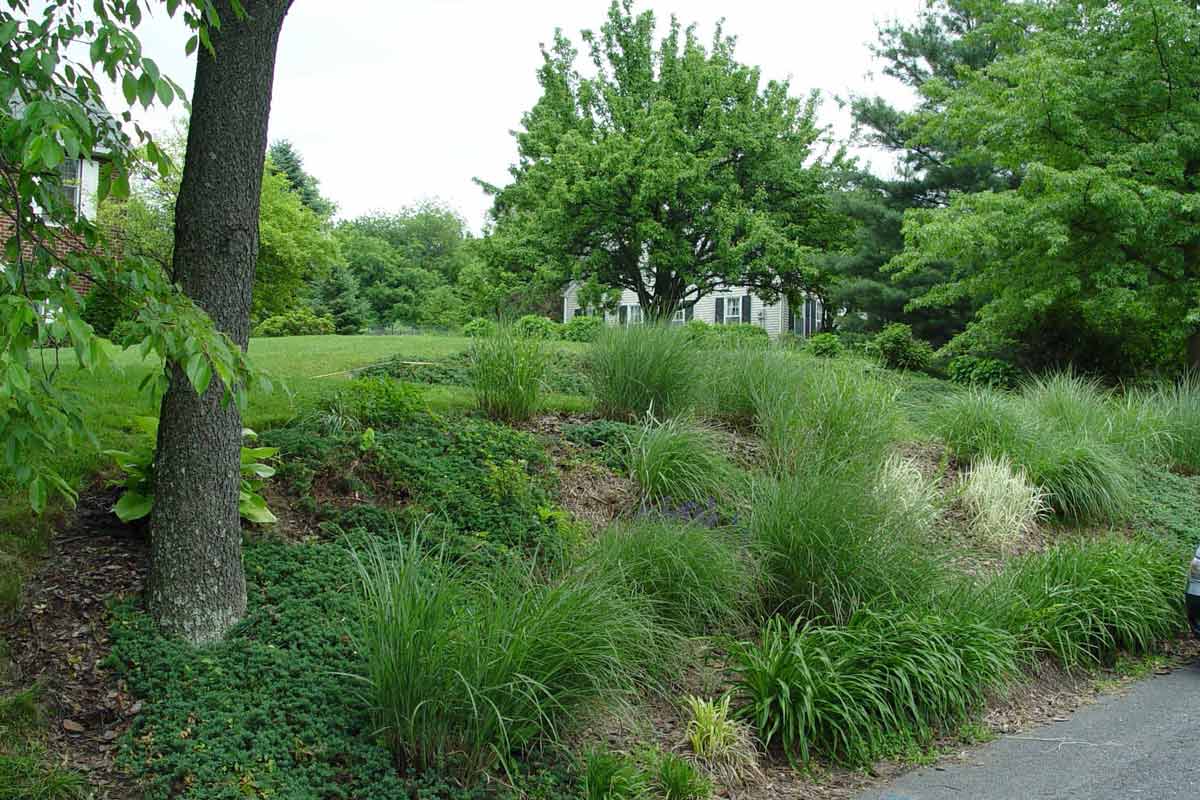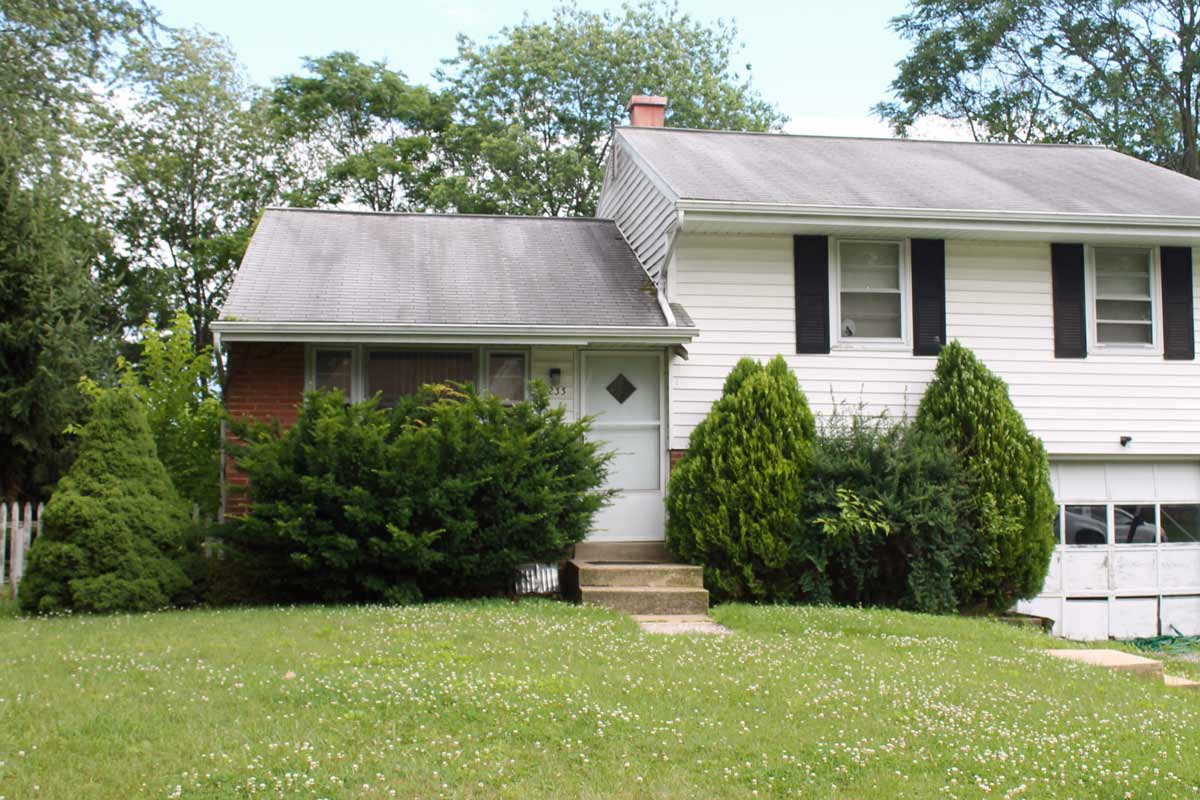Why the Mailbox is a Great Place for a Garden
If you’re looking to add some easy curb appeal to your home, plant a garden at your mailbox.
Bank problems. "I have a steep slope in my back yard that’s a pain to mow. The soil’s lousy, and even grass doesn’t grow very well.”
Ideas: A slope that can’t be comfortably mowed shouldn’t be kept in lawn grass. It’s a rolling accident waiting to happen. You need a plan.
First, consider if you want to sink money into walls or retaining boulders. Installing either will level the ground into one or more terraces that then can be planted. To allow access up, install steps or a winding switchback path.
Second, consider installing a cascading water feature as the centerpiece of the slope with landscaping around it. The water will look natural coming down the hill, and you’ll have a beautiful focal point instead of a barren bank. But it may be costly.
Third, replace the grass with massed groupings of tough, low-maintenance plants. Stick with three or four different species, and layer them down the slope. The tallest will provide height at the top, place mid-sized types in the middle, and perennials or groundcover at the bottom.
Example: Mass the top with tall evergreens such as holly, arborvitae, spruce and/or upright junipers; use 4- to 6-footers such as shrub roses, ornamental grasses, viburnums and/or dwarf goldthread cypress in the middle, and mass the lower section with lilyturf (Liriope), hardy geraniums, purple coneflowers, black-eyed Susans (Rudbeckia) and/or sedum.

Banks that are too steep to mow are better off terraced or planted with tough, low-care plants that can withstand harsh conditions on a slope. © George Weigel
Root of the problem. “My grass is dying under some trees that are getting big. The roots are even coming up out of the ground.”
Ideas: Grass and big tree roots don’t get along. The shade plus the sheer size of the moisture- and nutrient-sucking tree roots ultimately will win.
A better option is to replace the grass with plants naturally adapted to life around trees. Try groundcovers such as lilyturf (Liriope), pachysandra, leadwort (Ceratostigma), barrenwort (Epimedium), hardy ginger (Asarum) or deadnettle (Lamium).
Better yet, go for a shade-garden look by massing two or more different kinds of plants that tolerate dry shade and root competition.
Shrubs that retrofit better than the commonly attempted azaleas, rhododendrons, and Japanese Andromeda (Pieris) include: viburnums, Virginia sweetspire (Itea virginica), dwarf witchalder (Fothergilla), dwarf Nandina, boxwood, cherry laurel (Prunus laurocerasus), dwarf Hinoki cypress (dwarf Chamaecyparis obtusa), Russian cypress (Microbiota) and spreading English yew (spreading Taxus baccata).
A few other perennials that’ll get along with trees and shrubs include coralbells (Heuchera), foamy bells (Heucherella), bleeding heart (Dicentra, now called Lamprocapnos), plantain lily (Hosta), goatsbeard (Aruncus), hellebores (Helleborus) and Solomon’s seal (Polygonatum).

Big tree roots like this win out over grass. Tougher groundcovers that can compete better with tree roots are an option. © George Weigel
No privacy and getting baked. "I live in a new development, and the back patio hangs out in the open. I feel like I’m on a stage. There’s no privacy."
Ideas: For a quick answer to getting baked, invest in an awning or one or more large umbrellas.
Resist the urge to plant tall fast-growers like arborvitae all around the deck. That might solve the problem short-term but will soon make you feel like you’re in a closet. Instead, plant upright evergreens and taller shrubs further out near the property lines to give you screening but more “breathing room.”
Use small to mid-sized plants around the patio itself – enough to give some enclosure without putting a green wall in everyone’s face. Include a few interesting and/or fragrant plants (lavender and herbs for example) there.
If you’re on level ground or higher than the neighbors the fastest solution is a tall, solid perimeter fence. Then you can plant flowering shrubs and perennials along the inside of it.
Think about building a pergola and planting it with vines such as clematis, honeysuckle, or trumpet vine (Campsis radicans). If this is too messy for you when spent flowers and autumn leaves fall, a covered pergola, gazebo, or solid roof is cleaner but a more costly option.
Depending on how the sun angles, consider a wall or vine-covered trellis between the patio and where the sun sets.
If you’re patient, the best long-term solution is to plant one or more trees. Make sure the first one is directly in a line between where you sit and where the sun sets.
All wet. “We’ve got this wet part of the yard that’s sometimes soggy for days after a rain. Everything we’ve planted there has died.”
Ideas: Option one is figuring out where the water is coming from and then piping it or channeling it out of the area where it’s getting hung up with a swale or French drain.
If the water table is high or re-routing isn’t possible or practical, bring in good quality topsoil to build a berm or raised area. This elevated area will allow your plants to grow with their roots out of the sogginess. A berm 2 feet tall and 8 feet wide is a good proportion.
The third and most environmentally friendly option is to build a rain garden. This approach aims to keep water on site by creating a slightly depressed collection area that’s improved with sand and compost to get water into the ground faster. The depression is then planted with plants you’d find in wet meadows in nature, such as summersweet (Clethra), turtlehead (Chelone), Virginia sweetspire (Itea virginica), winterberry holly (Ilex verticillata), cardinal flower (Lobelia cardinalis), blue lobelia (Lobelia siphilitica), Joe-Pye weed (Eupatorium purpureum now Eutrochium), beebalm (Monarda) and spicebush (Lindera).
“My landscaping looked pretty good at first, but now stuff is growing together and growing over my windows.”
Ideas: That’s the problem with plants. They don’t stay where you want. They grow – sometimes way faster than you figured. Good careful planning is the best way to avoid this. Know your sizes before planting.
But what to do now? You may be able to transplant some of the smaller and shallower-rooted woody plants right away.
Some trees, shrubs, and evergreens can take a pretty good hacking and still come out looking good. Others will croak under a heavy hand. Unfortunately, there’s no shortcut. Different plants have a different resilience to hard pruning. Determine what you have and consult a trusted resource before “dejungling” appropriately.

Some plants that look good at first can quickly obscure windows and even the entire front of a house. © George Weigel